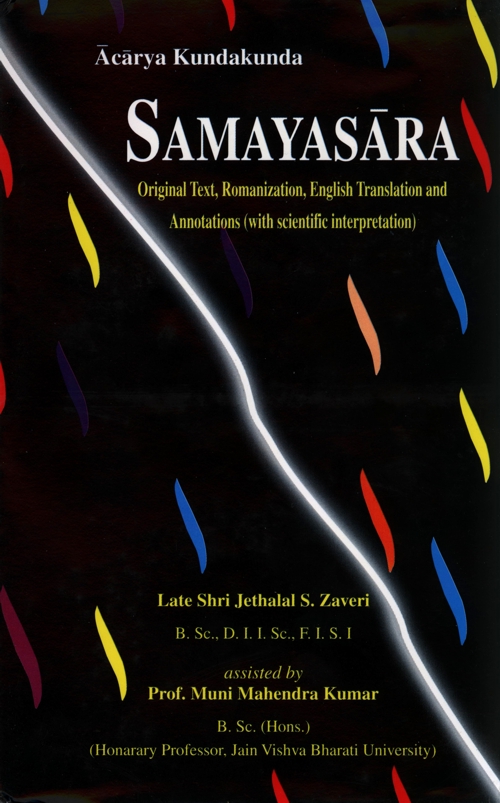
jadi so paradavvāṇi ya karejja ṇiyameṇa tammao hojja.
jamhā ṇa tammao teṇa so ṇa tesiṃ havadi kattā..31

jῑvo ṇa karedi ghaḍaṃ ṇeva paḍaṃ ṇeva sesage davve.
joguvaogā uppādagayā tesiṃ havadi kattā..32
(Jadi) if (so) the soul (paradavvāṇi karejja) was the substantive cause of producing alien objects (ṇiyameṇa tammao hojja) then in accordance with the law [of causality] it would be transmuted into that object; (jamhā) but since (tammao ṇa) it is not transmuted (teṇa so tesiṃ kattā ṇa havadi) it cannot be [called] its producer, [i.e., substantive cause]
(Jῑvo ṇa karedi) The soul does neither produce (ghaḍaṃ) the pot (ṇeva padaṃ) nor the fabric (ṇeva sesage davve) nor any of the other such objects; (joguvaogā uppādagā tesiṃ kattā havadi) but the soul is the producer of the activity and consciousness which are instrumental (as external causes) in producing the pot etc.
Annotations:
It has been stated before that according to the law of causality, two types of causal agents are essential for producing an effect:
- Substantive or intrinsic cause (upādāna karaṇa) and
- External cause (nimitta karaṇa).
Substantive cause is the substance or (raw) material from which an object is made or produced. External (nimitta) cause, on the other hand, consists of the workmen and equipment used in the process of production. Thus clay is the substantive cause or for the production of a pot i.e. clay is transmuted into (becomes) a pot. Similarly cotton, silk and the like are transmuted into a fabric. Potter or weaver and their instruments, wheel, loom etc. are, on the other hand, external agents for the production of pot or fabric. If, therefore, the soul was the substantive cause (upādāna karaṇa) for the production of any such thing, he would be transmuted into the object supposed to be produced by him. But, since, he is not transmuted, he cannot be regarded as the substantive cause.
In the worldly state, the soul is engaged in various activities which are of two types: (a) yoga—action and (b) upayoga—knowledge. Yoga is threefold:
- Mental activity—thought, conception
- Vocal activity - speech
- Bodily activity—walking, running, fighting.
- Knowledge—apprehension of an object with its contents and
- Intuition—apprehension of a thing without its contents.
Knowledge includes intellect, competence and technique.
For the production of a pot or fabric or any other article, the activity of the potter (or weaver), his instruments and his technique are essential as external cause (nimitta karaṇa). These external agents' activity (yoga) and technique (upyoga) are determined by the soul and thus in causal chain the soul is only the determinant of the external agents for the production of pot and the like.
In the above verses and the succeeding verses the author continues the discussion on empirical aspect of causal relation of the soul.
 Jethalal S. Zaveri
Jethalal S. Zaveri
 Prof. Muni Mahendra Kumar
Prof. Muni Mahendra Kumar

